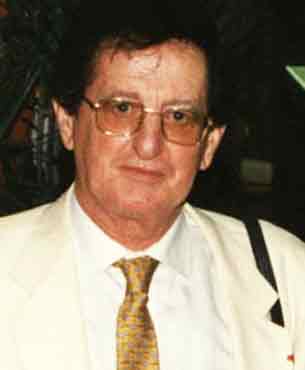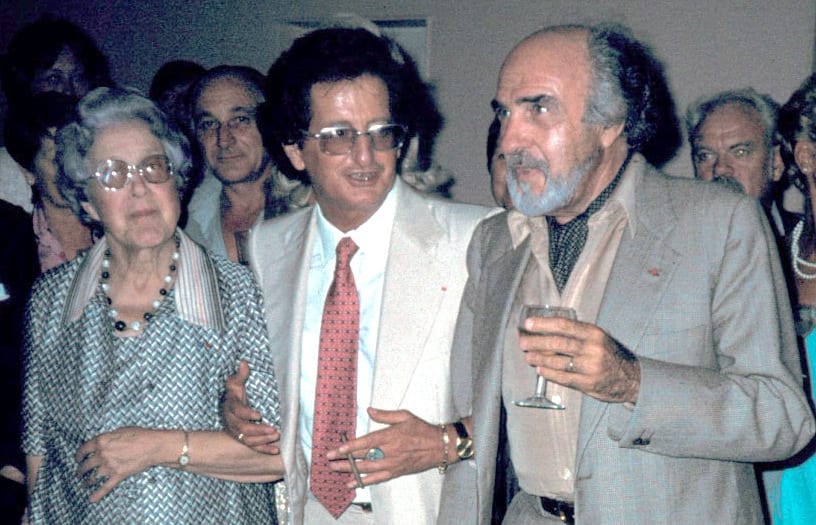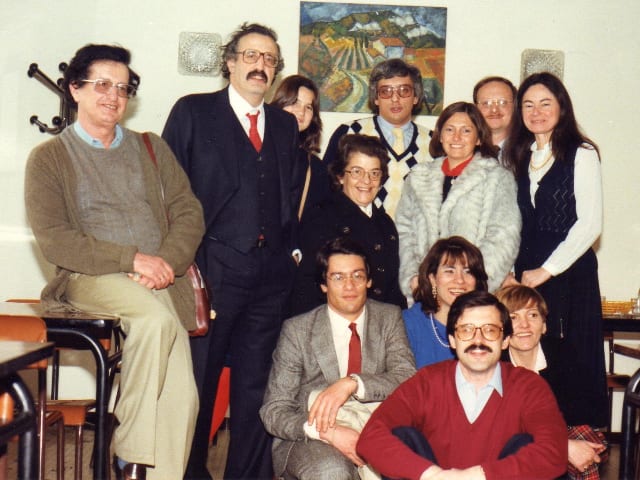
Joseph Roger
1918 - 2012
Joseph Roger passed away on September 3, 2012, in his 94th year. He was a major epileptologist of his time, the founder of a school with pupils from all over the world, and had a remarkable personality. Although he had been hit by a severe health problem in 1993, he remained active, at least nationally, into his eighties. He leaves behind his wife and three sons, and a huge following of epileptologists.
Joseph Roger ("Jo" to friends and colleagues) was born in 1918. He began his medical studies at Marseille but the second World War interrupted them. He was active in the French Resistance and received several prestigious decorations for his military actions. He refused a political career, resumed his studies and graduated from Marseille University as a neuropsychiatrist in 1948. Epilepsy quickly became his main interest, in all its aspects: clinical, neurophysiological, pharmacological, psychopathological, social. He was also a well-rounded neurologist, with a recognized competence in legal aspects of neurology, and served as an expert in the field during his whole active professional life, keeping an active private practice until his official retirement, at age 75.
He had a passionate interest in two main topics: progressive myoclonus epilepsies (PME), focusing on Lafora disease and Unverricht-Lundborg disease, and seizure and epilepsy classification. In 1968, he reported on the so-called “Ramsay Hunt syndrome”, at the French Neurology Society meeting, delineating the features of Unverricht-Lundborg disease, that had been hidden by decades of sterile controversies.
In the following years, there were numerous discussions with the Montreal and the Finnish schools which reached clarification during an international workshop on PME which he organized in Marseille in 1989, resulting in the Marseille Consensus (1990). Joseph Roger also was the international promoter of the concept of epileptic syndromes. During his tenure as Chair of the International league against epilepsy (ILAE) Commission on classification and nomenclature, he organized several international workshops at Marseille, and introduced, with the help of Fritz Dreifuss and Peter Wolf, among many others, the new ILAE 1989 classification. The “Blue Guide” on Epileptic Syndromes in Infancy, Childhood and Adolescence, first published in 1984, and renewed in its 5th edition (the first without his direct participation) in 2012, made his approach accessible to the many. This book was published in French and English, with an illustrative DVD, and translated into Japanese and Chinese.

He had a major interest in the social aspects of epilepsy. In 1960, in collaboration with Henri Gastaut, Anne Beaumanoir and Germaine Poinso-Chapuis, a former minister of Health, he created the Centre Saint-Paul, for the diagnosis, treatment and education of children and adolescents with epilepsy , and remained its Medical Director for nearly thirty years, taking over from Gastaut in 1968. There he developed the epileptology teaching and the clinical research which shined forth all over the world.
He was a leader, recognized and loved by all. He did not impose anything but listened, suggested, pushed his collaborators forward and exercised his moral authority without any coercion. He fostered pupils from Marseille, from France and from abroad, many from Italy and Spain. Many epilepsy syndromes came to light as a result of his sponsorship of his collaborators’ work. All were charmed by his intelligence, his curiosity, his fabulous memory, his rigor and honesty in research and patient care, but also by his simplicity, his tolerance, his humanism. His pedagogy was special. He spoke without precipitation, with long pauses, uttering ideas which always were original and groundbreaking. He had a remarkable sense of humour and added funny quotations and anecdotes to his serious speeches and discussions. He spoke English with a distinct French accent, but had the same, idiosyncratic accent when he spoke French — often imitated, but never equalled.

His qualities and competence served epileptology in the French chapter of the ILAE, of which he has been an active member from its onset, and later a president. He was awarded the first international Henri Gastaut prize. He served the ILAE as a member of the editorial board of Epilepsia, and as the chairman of several commissions (classification and terminology, education, paediatric epileptology). He received the Epilepsy Ambassador medal. He participated in numerous international courses and congresses and was honorary member of several scientific societies and leagues against epilepsy.
Joseph Roger was also a man of culture and a humanist, a quality often underlined by his former students, co-workers and all the epileptologists in the messages they sent after his death. He had a deep sense of justice and never renounced his convictions. He remained indifferent to small vanities. His patients and people who worked with him were also attached to him because of his human qualities.
He trusted his co-workers, secretaries, nurses and technicians as well as doctors. He considered that everyone had right to knowledge and provided complete explanations with simple, comprehensible words. He attracted also by his originality, somewhat surprising at the first contact, but there were no hurdles for those who wished to come close to him, because he was kind at heart and accessible to everyone. He enjoyed life and its pleasures, wit, political discussions, pretty women, fast cars, good wine and good spirits, cigars, nightclubs, and shared his appreciation of life with his friends and colleagues. We all remember his unconventional clothing and his familiar way of speaking, even with patients and their families.
In the past ten years, as his health had been declining, he hardly left his home, in the care of his loving wife, Carole, still enjoying, from his living room, the wonderful panorama over the Mediterranean sea. He was always happy when we visited him. He kept his sharp mind and critical spirit up to the last days, and was still an avid reader.
He also kept a vivid interest in our work and in the general progress of epileptology. We came to visit for the pleasure of talking with him, but we often also needed his opinion and criticism. He will remain our Master and a Master for many epileptologists around the world.
Respectfully submitted by Charlotte Dravet, Michelle Bureau, Pierre Genton, René Soulayrol
Subscribe to the ILAE Newsletter
To subscribe, please click on the button below.
Please send me information about ILAE activities and other
information of interest to the epilepsy community